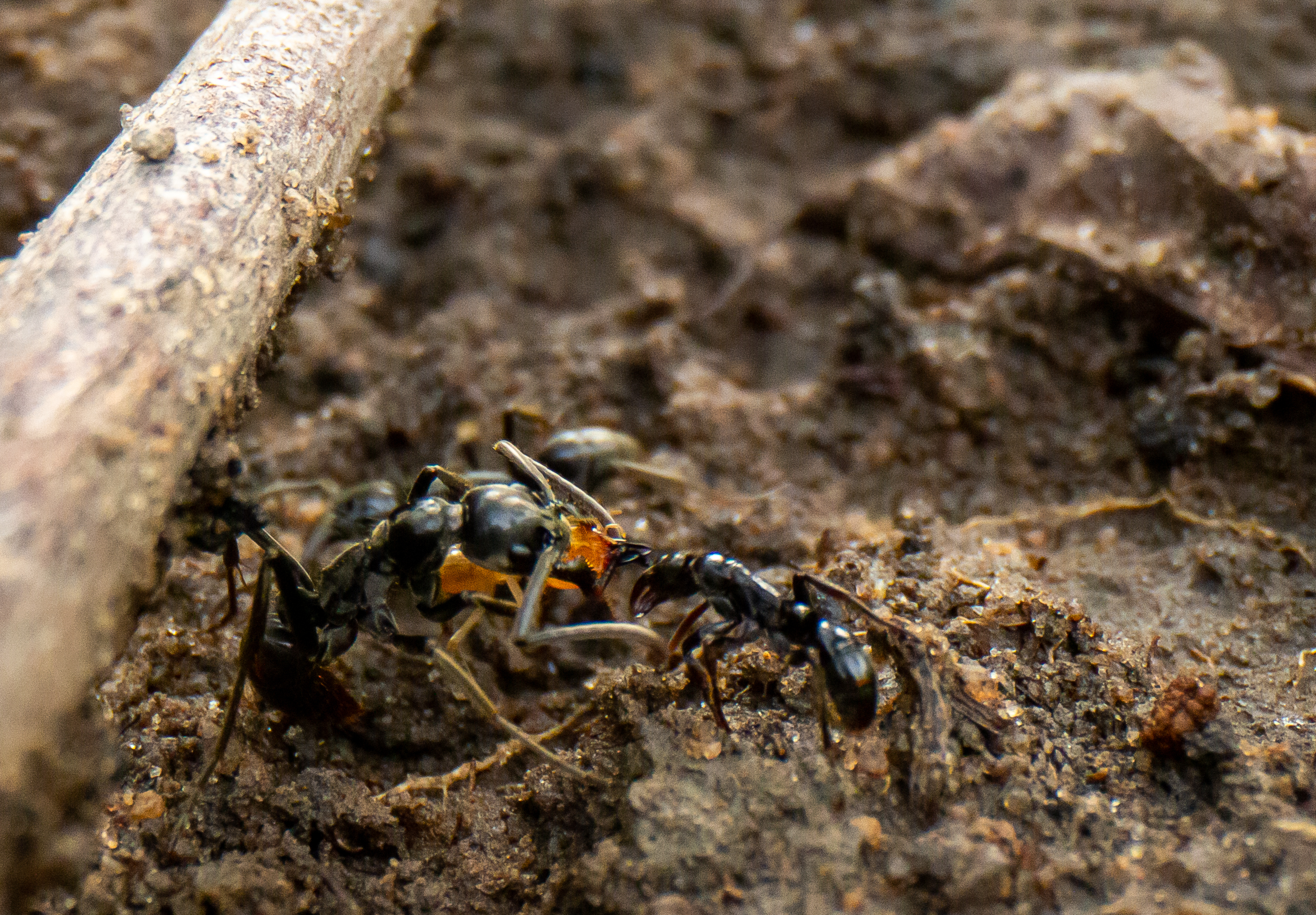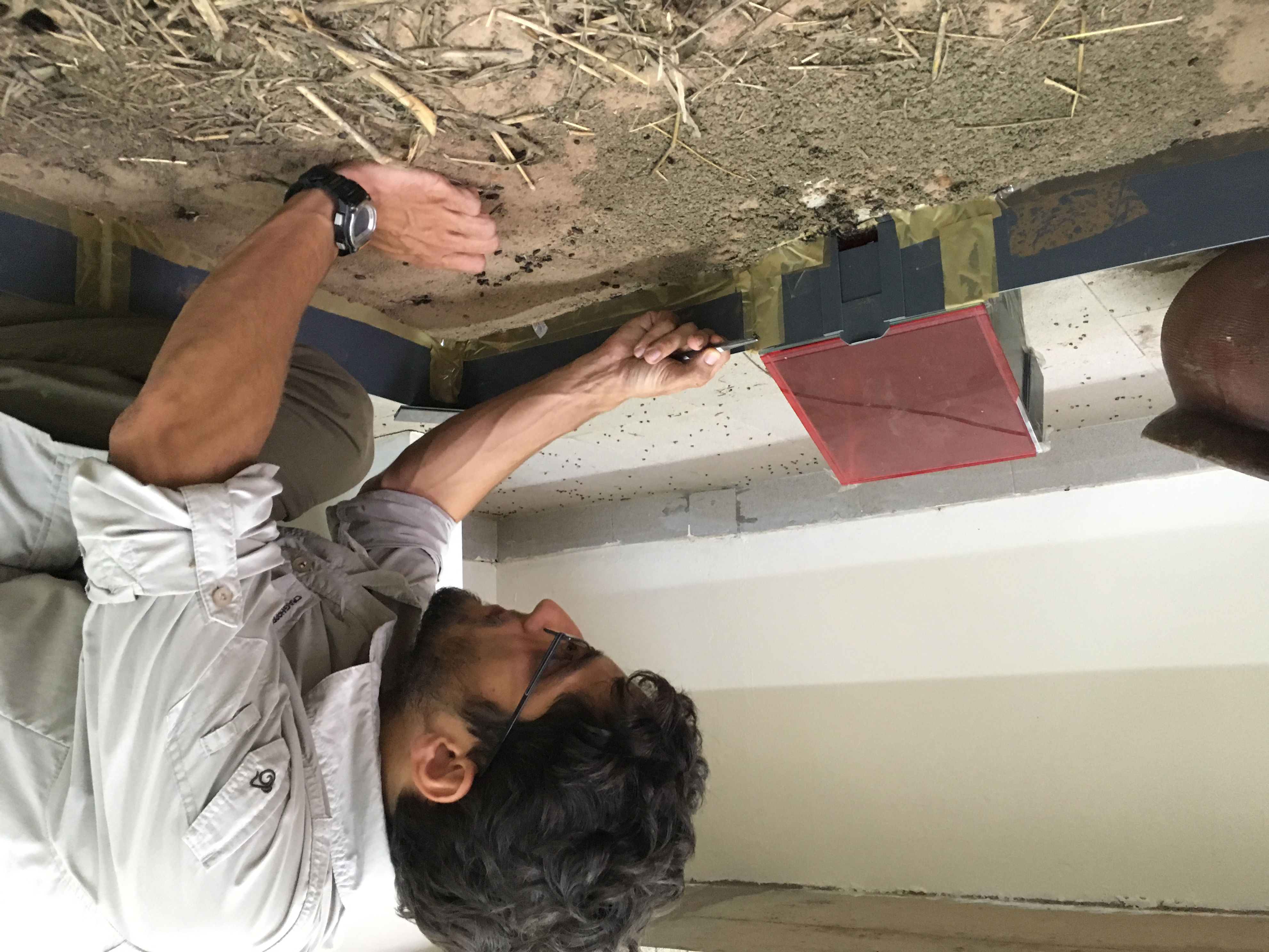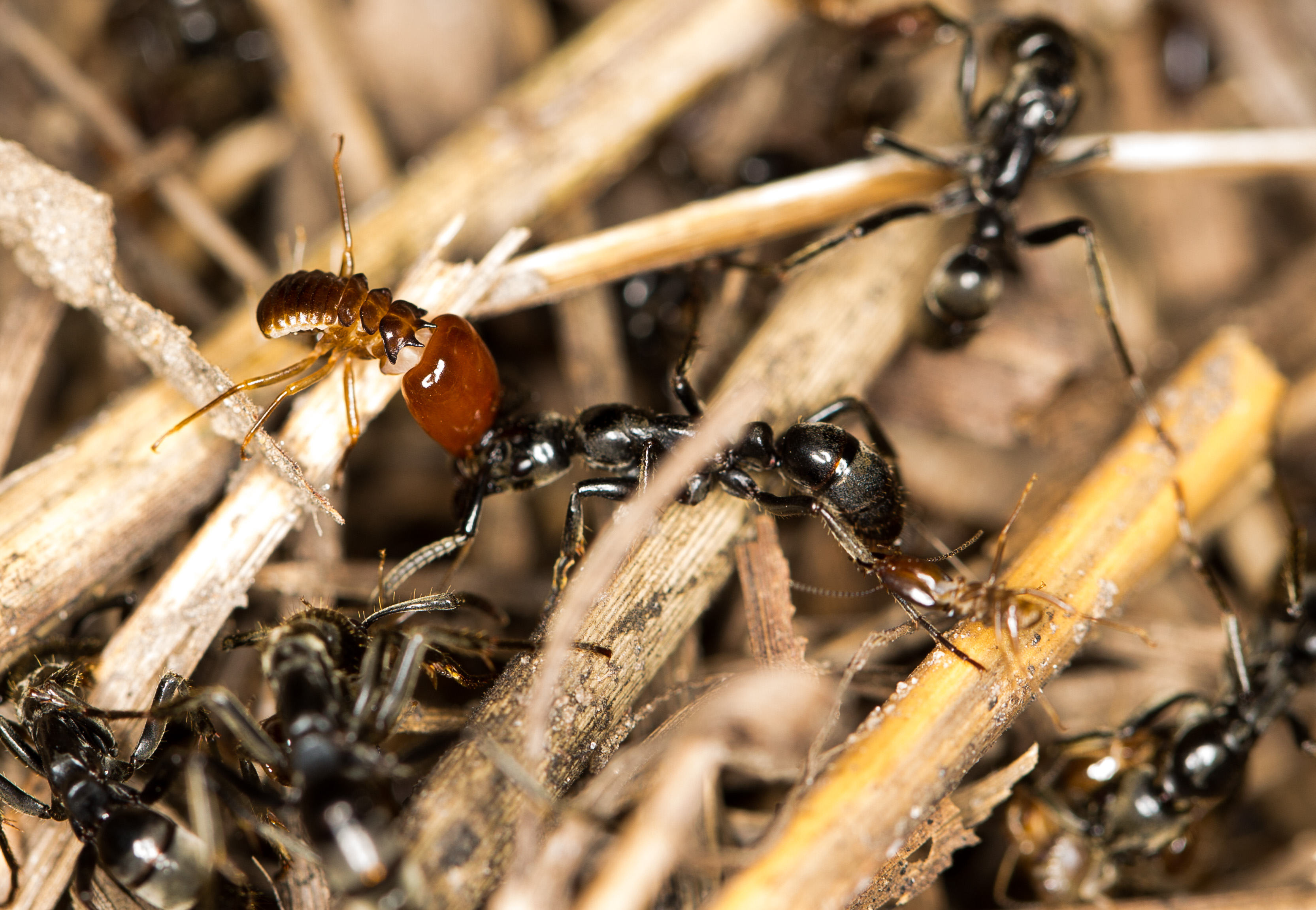
Ants’ ability to heal comrades may hold lessons for human infections
Sub-Saharan Matabele ants are known to be precision hunters, but it’s their tender side that recently caught the attention of scientists.
The ants, officially called Megaponera, often get hurt hunting termites — their sole source of food — because termites fight back ferociously, often inflicting serious damage on their attackers. But the ants have a special skill for healing their wounded comrades: They can detect when an injury is infected and treat it with antimicrobials they make themselves.
“They have a very sophisticated system of coping with dangerous and sometimes deadly infections with remarkable efficacy,” says Erik Frank, a scientist in the University of Würzburg Department of Animal Ecology and Tropical Biology, citing a nearly 90 percent cure rate among the ants. “We can learn a lot from these tiny creatures.”
Implications for humans
Frank and his colleagues studied how the ants produce antimicrobial substances and apply them to the wounds of their fellow ants, and they recently reported their findings in the journal Nature Communications.
Their research focused on ants infected with Pseudomonas aeruginosa, a virulent and often drug-resistant bacterium common to ant injuries. It’s the same microbe that tainted human eyedrops in the United States last year, causing cases of blindness and death.
Insights into the ants’ behavior could hold implications for humans, scientists say, especially when it comes to drug-resistant bacteria, a growing threat that has made it difficult to treat certain infections.
There’s “great potential here for analyses by pharmaceutical companies or other scientists in these fields to look into it further,” Frank says. “We have a scenario that is incredibly similar to our own: an animal with an infected wound and another animal treating it. Facing the same problem, the solutions these ants came up with should be translatable to some extent to our own system.”

A Megaponera lab experiment.
Nature’s therapeutics
History is rich with examples of science turning to nature as a source of human therapeutics. “Some of our most useful and enduring antibiotics or anti-parasitic agents were first discovered from natural sources,” says Peter Hotez, dean of the National School of Tropical Medicine at Baylor College of Medicine and co-director of the Texas Children’s Hospital Center for Vaccine Development, who was not involved in the study.
Among these are the antibiotic streptomycin and the anti-parasitic ivermectin, both isolated from soil; bacteriophages, viruses found in sewage, soil, wastewater and animal guts that are harmless to humans but kill bacteria; and magainin antimicrobial peptides, obtained from the skin of the African clawed frog.
“The magainin case was based in part on observing rapid healing in frog skin, not too different from the ant discovery,” Hotez says. “So it turns out that observing antimicrobial substances from natural products is a promising route for new anti-infectives discovery.”
The ants produce a substance made up of 100 chemical compounds and 41 proteins when treating infected wounds, which “allows them to have a multifaceted approach, like a broad-spectrum antibiotic,” Frank says. “I believe some of these compounds could surely have some uses also in our own medical system.”
One never-before-seen protein in the secretions “was by far the most abundant,” he says, adding: “I bet that there is something special about this one protein in treating infected wounds.”

An ant that has been bitten by termites.
Precision hunters
The ants, named after southern Africa’s Matabele tribe, hunt with military-like precision. First, a scout finds the termites, then it returns to the nest and recruits up to 800 ant soldiers.
They follow the scout in column formation, then gather together to attack. Only about five to 10 ants are injured, which “might not sound like a lot,” Frank says, but the number can rise quickly “since these ants can go on hunts up to five times a day.” This could mean 1,000 in a month, not insignificant because the colonies consist of no more than 2,000, he says.
“Ants have a special chemical profile on their cuticle they use to recognize each other,” Frank explains, comparing it to a uniform, with “medals” that identify the queen, foragers, nurses and those with other jobs, and it signals the condition of an injury. This enables them to recognize when an ant is hurt and whether its immune system is fighting an infection, according to Frank.
The ants extract the antibiotic materials from the metapleural gland, located on the side of their thorax. “Imagine the metapleural gland like a kind of pocket, roughly at the same height as the pockets of a pair of trousers,” which contains the sticky antimicrobial secretions, Frank says. “To apply them on a wound, the ant reaches into this pocket with its front legs, collects the secretion on their ‘hands’ and then licks them off the hands to accumulate it in their mouths. Once they have enough of their secretions in their mouth, they will start licking the wound.”
Robert T. Schooley, an infectious diseases specialist and phage expert at the University of California at San Diego, says the study “speaks very strongly to the power of evolution at both the societal and individual levels. Societies succeed when they protect their most vulnerable.” Schooley was not involved in the research.
“Additional work might provide insights leading to antimicrobials useful in human and veterinary medicine,” Schooley says, although “the compounds are applied topically, and it is not clear what toxicities might emerge if administered systemically.”
The researchers want to collect more samples for further analysis, although this may prove challenging because the site of the initial field work — in northern Ivory Coast — is now under a terrorism threat, Frank says. “I am trying to find a workaround with some locals helping to collect the ants for me and sending them to Germany,” he says.
Ants performing ‘triage’
The ants’ social behavior first caught his attention after he accidentally drove over an ant hunting party.
“I immediately got out of the car to check how the ants were doing,” he recalls. “It was a massive mess, ants running around frantically. But they were also looking for injured individuals, picking up and carrying back those still worth saving. To my surprise, they left behind the ants that were too heavily injured. They were performing a type of triage.”
His team is also studying army ants in Costa Rica and some European ant species — finding similar wound-care approaches — and hopes to include other social insects, such as bees. He’s also looking at how chimpanzees use insects to treat their wounds. “Overall, I think the topic of wound care in the animal kingdom is frustratingly underexplored, and there is still much for us to discover,” he says.
News Related-
Antoine Dupont still hurt by 'injustice' of World Cup loss to Springboks
-
China's New Aircraft Carrier Begins Catapult Testing
-
Aircraft Downed Inside Russia By Patriot System: Ukrainian Air Force
-
“Am I Prog’s Taylor Swift? That’s a debate that could run and run”: why Peter Hammill re-recorded his Enigma-era albums
-
Car With Pro-Russian Fighters Blown Up by Resistance: Exiled Mayor
-
Europe and African nations must find effective common ground in dealing with migration influx
-
Springbok lock opts not to renew contract with URC team
-
Pravin Gordhan’s deathly legacy: A threat to SA’s economic future
-
Antoine Dupont STILL hurt by ‘injustice’ of Rugby World Cup loss to Springboks
-
Rubber stamping NHI Bill will have damaging consequences for SA for generations
-
Inside horrific conditions Hamas hostages suffered including losing 15lbs in 50 days
-
After the Bell: SA’s NHI healthcare disaster starts right here
-
Gupta-linked development land for sale
-
Gary Neville begrudgingly claims brilliant Man Utd midfielder ‘looked like a Man City player’ in Everton mauling
